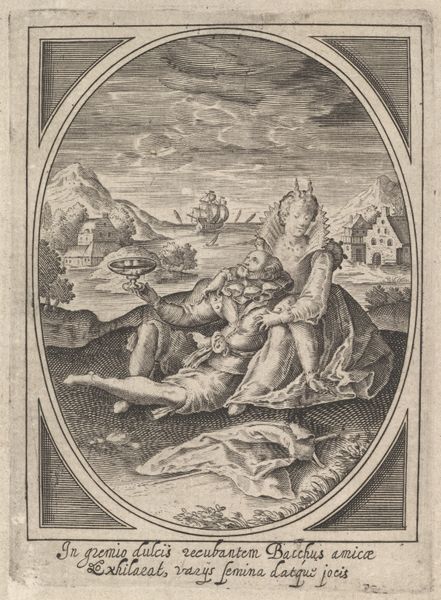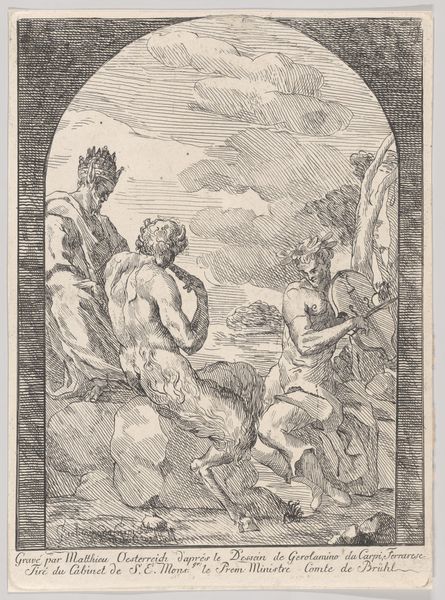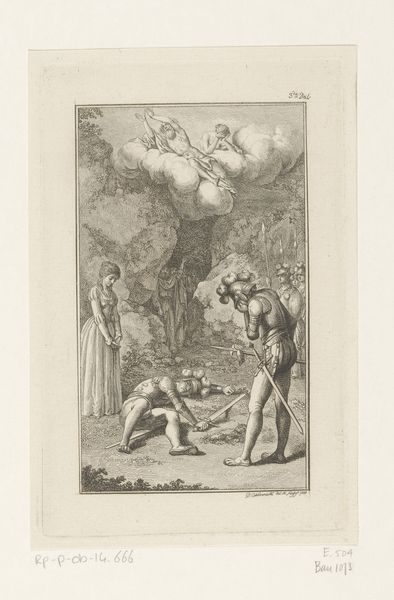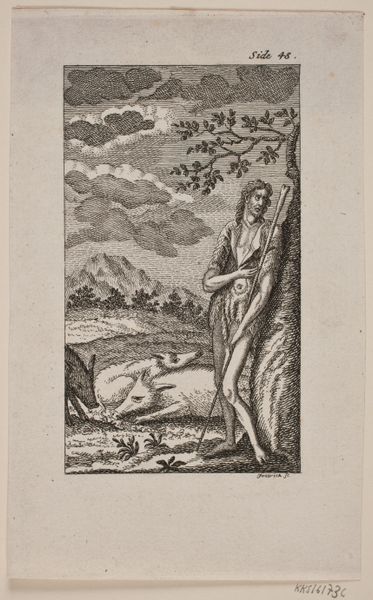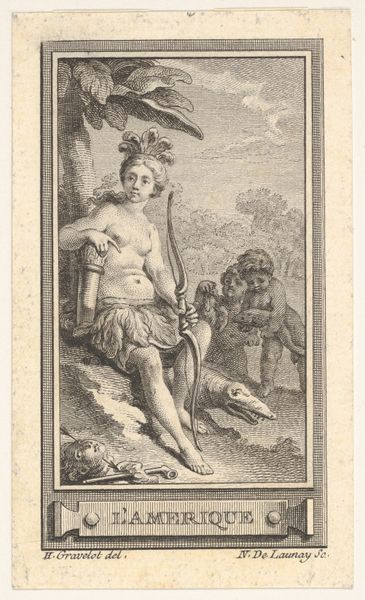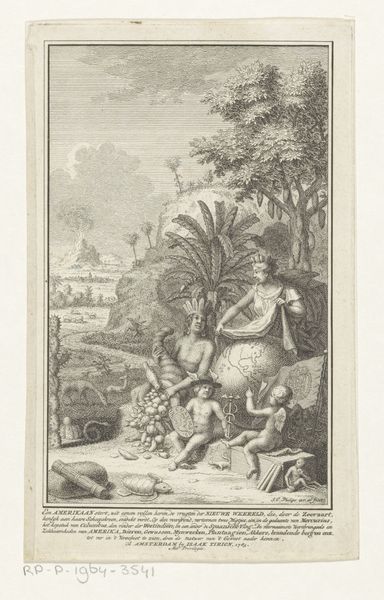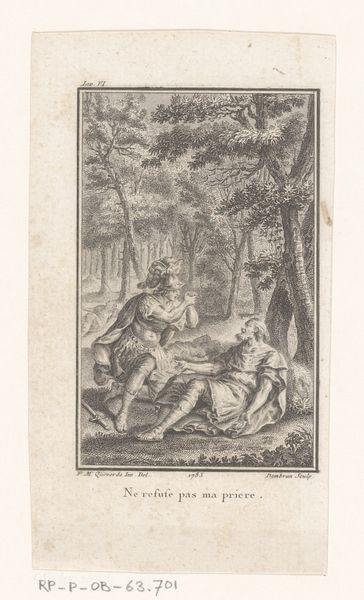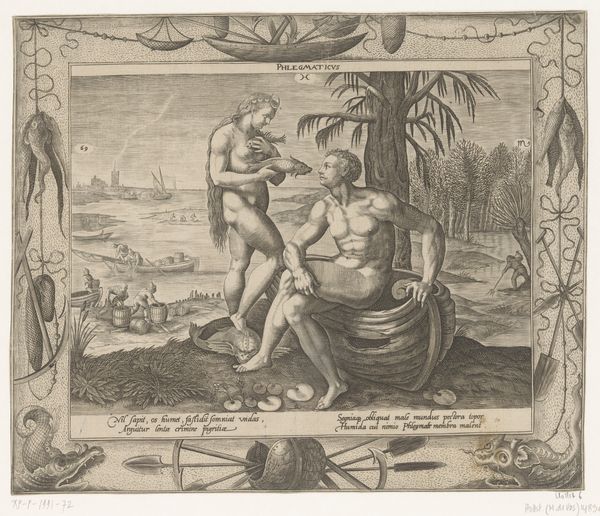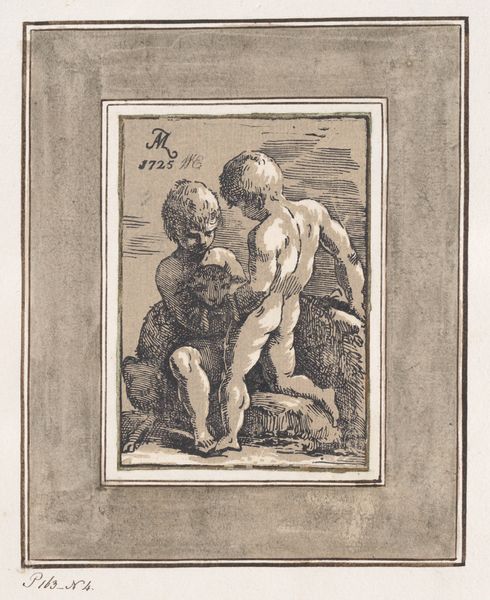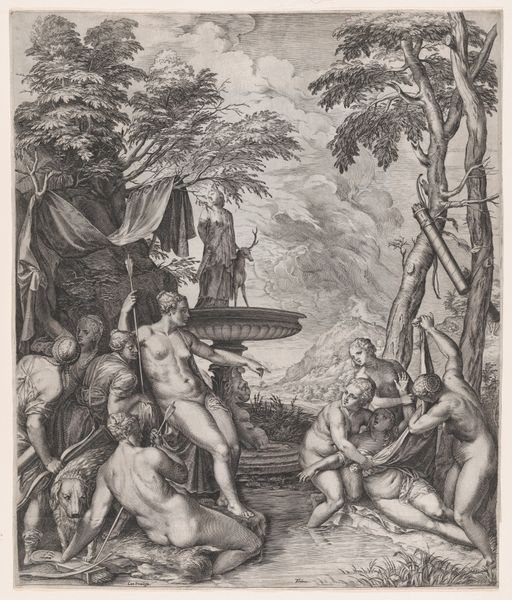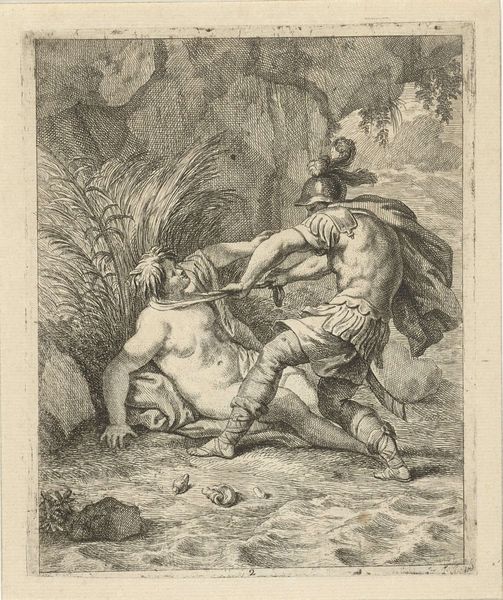
Illustration til "Katekismus for alle mennesker" 1742 - 1809
0:00
0:00
Dimensions: 143 mm (height) x 91 mm (width) (bladmaal)
Curator: The rendering of light and shadow immediately strikes me. This etching by Johann Gottlieb Friedrich, dating from 1742 to 1809, captivates with its stark contrasts and intricate linear work. Editor: The first thing that hits me is the evident vulnerability. The figure reclined appears utterly dependent on the benevolence of the figure supporting him; an intimate depiction of care juxtaposed against a rather desolate backdrop. Curator: Indeed. Titled "Illustration til "Katekismus for alle mennesker,"" its engagement with history painting through a biblical narrative becomes clearer upon closer inspection. The artist depicts a scene of a good Samaritan tending to a wounded man, illustrating themes of charity and human connection amidst challenging circumstances. Considering the historical moment when the printing was done, its powerful messaging speaks to human interconnectedness. Editor: From a formalist point of view, note the delicate, yet assured application of line, which serves not only to describe form, but also to imbue the work with emotional depth. The use of hatching and cross-hatching builds volume while creating a sense of atmospheric perspective, pushing the distant figures into secondary status. Curator: Precisely. This isn't just an exercise in aesthetic skill. The composition invites contemplation on social responsibility and compassion, key elements in philosophical and theological discourse of the period. Furthermore, this scene becomes particularly resonant when considered within the broader socio-political conditions in Denmark during Friedrich’s lifetime. Editor: The composition itself seems almost divided into three registers. There's the sky, full of potential. Then the narrative center, dense with meaning. Finally, there’s that arid, sparsely populated landscape – a terrain mirroring, perhaps, the injured man’s internal state. Curator: We see how the stark landscapes amplify the social message imbedded into the print itself, especially within the religious context for which it was made. It is powerful because the messaging rings as true now as it did then. Editor: Reflecting on the print, one appreciates Friedrich's skill in weaving together technical mastery and an emotionally resonant visual narrative through delicate application of formal devices, drawing the viewer closer to the image and its universal humanism. Curator: Yes, understanding its social and historical relevance lets us truly appreciate it for its contribution to how we understand how art can serve to remind us about taking care of one another.
Comments
No comments
Be the first to comment and join the conversation on the ultimate creative platform.
